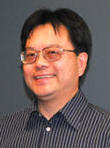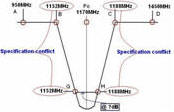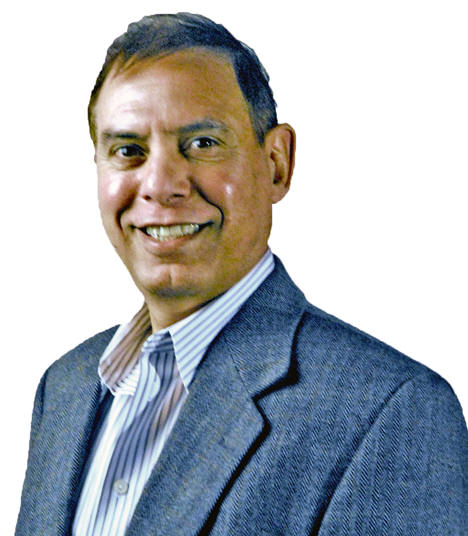FCC Narrowbanding Deadline
There’s now less than a year
left before the FCC’s narrowbanding edict goes into effect when all public safety and business land mobile
radio systems operating in the 150 to 174 and 421 to 512 MHz bands must switch from 25 kHz to 12.5 kHz
channels. The FCC’s mandate covers public safety systems, public utilities, schools, transportation
departments, and mass transit. Services that don’t comply by January 1, 2013 will be subject to FCC
enforcement action that can include fines or loss of license. It translates into one voice path in a 12.5 kHz
channel, two voice paths in a 25 kHz channel, or data channels with data rates greater than 4.8 Kb/s per 6.25
kHz channel. Modulation can be either analog or digital as long as they have “12.5-kHz efficiency”.

Designers of receiver multicouplers and
transmit/receive distribution networks (among other subsystems) need more stringent receive filtering--and
crystal filters are the obvious choice for achieving it. Anatech has been designing standard and custom
filters for just this application for more than 20 years. They’re used in receivers that operate in every
channel of type of affected system and exhibit the exceptional performance that narrowbanding will require.
Based on our vast library of designs, we can manufacture crystal filters for any frequency band covered by the
mandate that meet the requirements for highly-selective filtering. For more information, please call us at
(973) 772-4242 or send us an e-mail to
sales@anatechelectronics.com.
Microwaves to Speed Drug Development?
English company Uniqsis and Sweden's WaveCraft are jointly developing microwave-based flow chemistry
systems to improve the ability to scale up compound synthesis during drug development. The team will integrate
Uniqsis’ microwave applicator technology and WaveCraft reactors. WaveCraft’s technology uses an applicator and
proprietary microwave generator based on mobile phone technology to apply microwave energy and accelerate
chemical reactions. Combining flow chemistry with microwave heating could enable researchers to continuously
change power and frequency to optimize synthesis reactions. Scale-up could then be carried out without the
need to re-optimize conditions.
Help Us Out… Get a Spectrum Chart!
We’re interested in your opinion
and we know how valuable your time is. So if you would please take a few minutes to answer our short
questionnaire, we’ll send you a copy of the complete U.S. frequency spectrum chart in full color spectrum
chart…always a handy reference.
Please click
here
to take the survey….and thanks in advance!
|
The Filter Answer Man
The first of our new series of tutorials on filter and other product characteristics is provided this month
by Chung Au, our international sales manager, who answers some questions he recently received.
If you
have any questions you’d like us to answer, please send them to us at
filters@anatechelectronics.com. We’ll answer them in the next issue!

Duplexers and Diplexers
These two terms are often used interchangeably when in
fact they are two different types of devices. A diplexer is a three-port network that separates incoming
signals from one port into two paths. The input signals must be different enough in frequency to allow filters
to provide unhindered rejection. Conversely, a duplexer is also a three port network but it instead allows a
transmitter and receiver to use the same antenna at the same frequency. In both cases a high degree of
rejection is required to ensure that the signals do not interfere with each other.

Notch Filter Passbands
When specifying a notch filter, we have been asked to provide a design with the same passband frequencies
and notch frequencies. The conflict is obvious when shown graphically:

SAW Filter Bandwidth
Limitations
We have often been asked to provide SAW filters with very wide bandwidths, in the latest case 91 MHz with
a center frequency of 870 MHz. However, such a bandwidth is too wide for a SAW filter with this bandwidth as
the maximum can 10% or less of the center frequency.
Testing for the “Real World”
A seemingly obvious yet often overlooked
requirement for system designers is subjecting the finished product to signals and a signal environment in
which it will actually operate. This was once just “desirable” but thanks to close channel spacing and an
overcrowded spectrum, designers who fail to evaluate their products under worst-case can conditions do so at
their peril.
Fortunately, modern test equipment makes it possible to create simulated signal
environments with relative ease. In addition, there are system-level software tools that allow a circuit
design to be evaluated and modified by subjecting them to real-world signals. Such efforts may take more time,
but are well worth the effort.
The Importance of Rejection
The rejection of out-of-band signals is obviously the primary goal of every filter but the specification
has taken on new meaning in today's congested spectrum. As a result, in order to effectively attenuate a
signal 3 MHz from the desired signal the filter must have rejection of at least 40 dB outside its passband.
Less rejection can be tolerated in some circumstances but these are fewer and fewer every day. Duplexers must
have especially sharp cutoff characteristics as well as high isolation and the lowest possible insertion loss
so that that neither the receive or transmit frequencies will interfere with each other. |
A Message from
Sam Benzacar

Every day we get requests from current and prospective customers for filters and other products with
specifications that simply cannot be achieved -- by anyone. We also get questions such as the first one in
this issue about diplexers and duplexers, which are often considered the same thing but aren't.
With
that in mind, beginning this month we are dedicating the center column of the Anatech Electronics newsletter
to answering common questions posed by our customers. Some may seem simple and others will be notoriously
complex, but we’re hoping novices and veterans alike will benefit from a little “refresher”. We hope you find
this information useful.
New Functionality for AMCrf.com!
We have just added
several new features to our Web store,
www.AMCrf.com,
that make it more informative and easier to use. We have categorized products by specific applications, added
more relevant content to the banner area at the top of the home page, and several other features we hope will
make specifying our products easier than ever before.
WHAT'S NEW...
When Politics Mix With Technology
LightSquared has charged the government with rigging the latest tests to evaluate its compatibility
with GPS systems so its system would fail (which it did). And members of Congress have alleged that the Obama
administration and the President himself played major roles in promoting the proposal.
Not
Everyone Thinks Smart Meters Are Brilliant
Residents of Chicago suburb of Naperville are fighting the city’s $22 million program to install utility smart
meters, gathering more than 4,200 signatures and primarily citing health as the biggest concern, as the meters
emit (low intensity) microwave signals.
Taiwan Stays with WiMAX
As the world moves to LTE, WiMAX subscribers are growing fast in Taiwan. The government says it will push
development of WiMAX applications to help the countries six WiMAX operators expand their networks.
Did you know...

1. The Internet was originally called ARPANet (Advanced Research Projects Agency Network) designed by the
US Department of Defense.
2. In 1878 the first telephone book ever made contained only 50 names.
3. Originally in 1886 Coca Cola was introduced as an 'intellectual beverage' to boost brain power. |







